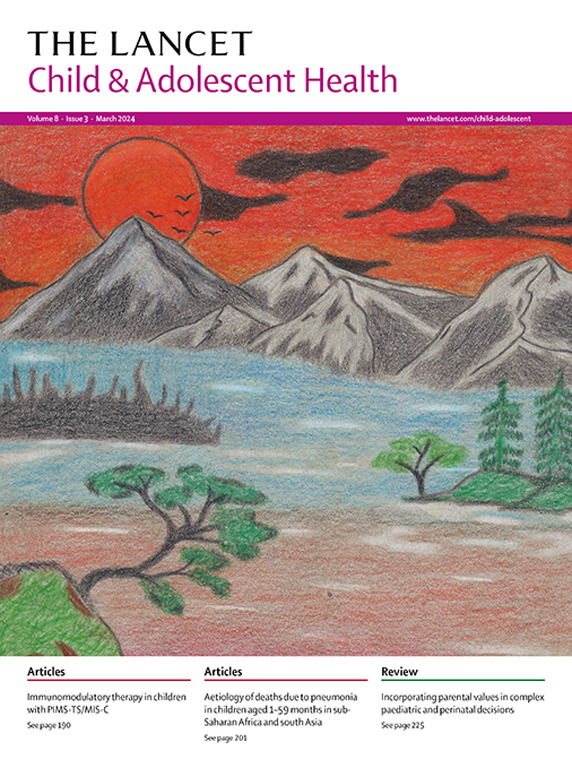The expanding field of genetic developmental and epileptic encephalopathies: current understanding and future perspectives
IF 19.9
1区 医学
Q1 PEDIATRICS
引用次数: 0
Abstract
Recent advances in genetic testing technologies have revolutionised the identification of genetic abnormalities in early onset developmental and epileptic encephalopathies (DEEs). In this Review, we provide an update on the expanding landscape of genetic factors contributing to DEEs, encompassing over 800 reported genes. We focus on the cellular and molecular mechanisms driving epileptogenesis, with an emphasis on emerging therapeutic strategies and effective treatment options. We explore noteworthy, novel genes linked to DEE phenotypes, such as gBRAT-1 and GNAO1, and gene families such as GRIN and HCN. Understanding the network-level effects of gene variants will pave the way for potential gene therapy applications. Given the diverse comorbidities associated with DEEs, a multidisciplinary team approach is essential. Despite ongoing efforts and improved genetic testing, DEEs lack a cure, and treatment complexities persist. This Review underscores the necessity for larger international prospective studies focusing on both seizure outcomes and developmental trajectories.
遗传发育和癫痫性脑病领域的不断扩大:当前认识和未来展望
基因检测技术的最新进展彻底改变了对早发性发育性和癫痫性脑病(DEEs)基因异常的鉴定。在本综述中,我们将介绍导致 DEEs 的遗传因素不断扩展的最新情况,包括已报道的 800 多个基因。我们将重点放在驱动癫痫发生的细胞和分子机制上,同时强调新出现的治疗策略和有效的治疗方案。我们探讨了与 DEE 表型相关的值得注意的新基因,如 gBRAT-1 和 GNAO1,以及基因家族,如 GRIN 和 HCN。了解基因变异的网络级效应将为潜在的基因治疗应用铺平道路。鉴于与 DEE 相关的合并症多种多样,因此必须采用多学科团队方法。尽管我们一直在努力改进基因检测,但 DEE 仍无法治愈,治疗的复杂性依然存在。本综述强调,有必要开展更大规模的国际前瞻性研究,重点关注癫痫发作结果和发育轨迹。
本文章由计算机程序翻译,如有差异,请以英文原文为准。
求助全文
约1分钟内获得全文
求助全文
来源期刊

Lancet Child & Adolescent Health
Psychology-Developmental and Educational Psychology
CiteScore
40.90
自引率
0.80%
发文量
381
期刊介绍:
The Lancet Child & Adolescent Health, an independent journal with a global perspective and strong clinical focus, presents influential original research, authoritative reviews, and insightful opinion pieces to promote the health of children from fetal development through young adulthood.
This journal invite submissions that will directly impact clinical practice or child health across the disciplines of general paediatrics, adolescent medicine, or child development, and across all paediatric subspecialties including (but not limited to) allergy and immunology, cardiology, critical care, endocrinology, fetal and neonatal medicine, gastroenterology, haematology, hepatology and nutrition, infectious diseases, neurology, oncology, psychiatry, respiratory medicine, and surgery.
Content includes articles, reviews, viewpoints, clinical pictures, comments, and correspondence, along with series and commissions aimed at driving positive change in clinical practice and health policy in child and adolescent health.
 求助内容:
求助内容: 应助结果提醒方式:
应助结果提醒方式:


